The Rolling Stones “Aftermath (UK)”
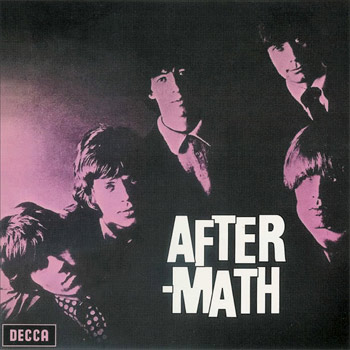
The Rolling Stones may still elicit the soubriquet the greatest rock’n’roll band in the world, but in my opinion they’ve produced in a 42-year recording history (to A Bigger Bang, 2005) just two albums really worthy of the full five stars. Both came in the 1960s when they were still comparatively young and hungry, and both interestingly represent periods of transition. Aftermath was a product of their move from faux American R’n’B garage band towards a British pop-psych sensibility motivated by the success of mid-period Beatles and the demand by their manager, Andrew Loog Oldham, that they develop as songwriters; and Beggars’ Banquet the corresponding move back to their roots, post-psychedelia.
Aftermath was the Stones’ first album to comprise only their own compositions, and can be compared to Rubber Soul in its mix of adventurousness and commercial appeal. Although Jagger’s and Richards’ songs are in general not as strong harmonically as Lennon’s and McCartney’s “ the Stones lacking the Fabs’ insight into such diverse musical fields as jazz, Tamla, country and showtunes, not to mention a studio Svengali of the calibre of George Martin – the best of them are right up there, and the eclectic instrumentation brought to bear by Brian Jones, Jack Nitzsche and the invisible sixth Stone Ian Stewart is every bit as effective as Martin’s baroque embellishments. Under My Thumb, Take It Or Leave It and Out Of Time were all considered commercial enough to be covered immediately as singles by high-profile acts. The eleven-minute bluesy jam Going Home (not the Ten Years After song) was unprecedented on a British pop album, yet works brilliantly in the context of the wider work. The one dubious quality is the mysogynous nature of many of the lyrics; Stupid Girl, Thumb, Time, Dontcha Bother Me and Take It unambiguously reveal Jagger’s prevailing frame of mind.
Despite the classic British Invasion sound of the album, it was recorded in RCA’s Hollywood studios and engineered by Dave Hassinger, who would fall out big-time with the Grateful Dead a year or two later but who got along famously with the Stones if his sleeve notes are to be believed. Production was, as usual, credited to Oldham, but Nitzsche was ever-present at the sessions and the hallmarks of his touch are all over the record. North American readers should note that Aftermath UK is a greatly superior artefact to the US release of the same name, benefitting from omission of the superfluous previous hit single and from the band’s preferred sequencing, not to mention offering fourteen tracks against the US version’s eleven.
“Mother’s Little Helper”
![]() CD Reissue | 2002 | Abkco | at amazon ]
CD Reissue | 2002 | Abkco | at amazon ]
![]() Original Vinyl | 1966 | Decca | at ebay ]
Original Vinyl | 1966 | Decca | at ebay ]
![]() Spotify link | listen ]
Spotify link | listen ]
Also Recommended
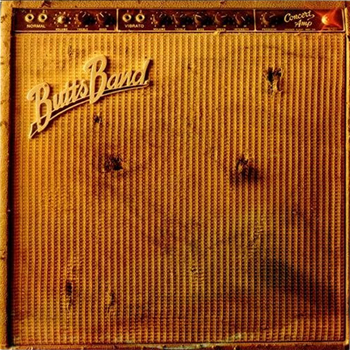
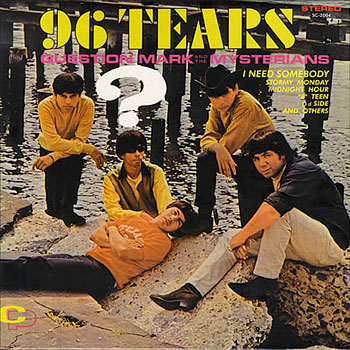
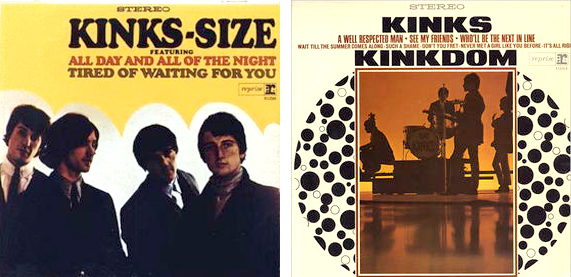
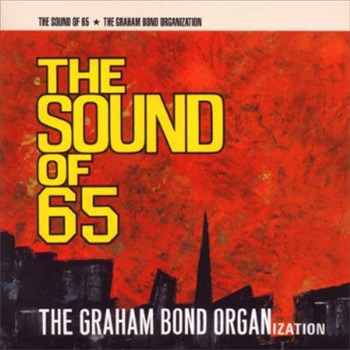
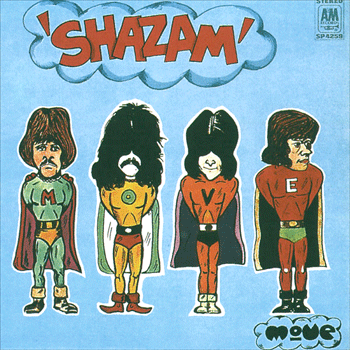
Damn, Let It Bleed, Sticky Fingers, and Exile don’t merit five stars?!?! Stern taskmaster. I think “Going Home” might be a microcosm of the album. It’s good, suggestive of great, but ultimately better in theory than execution. I’m not sure the Stones were totally in their comfort zone with some of these songs, as they were on their previous LP (Out Of Our Heads) or their underrated follow-up (Between The Buttons). Frankly, I think they were still figuring out how to be songwriters. No shame in that.
Also, “Going Home” needs to be put in context. The Stones were trying to keep up with The Yardbirds and Who, performers of the highest order, and masters of the live, 20-minute build-and-release “rave-up.” Mick and Keef were no dummies. They, as well as any songwriters ever, were able to distill the trends of the day into the Stones’ music. Unfortunately, “Going Home” never quite climaxes. It’s all buildup, but no release. I’m not sure it’s more complicated than they were slightly out of their element.
On a totally positive note, “Lady Jane” is worthy of mention as the basis for Neil Young’s “Borrowed Tune,” which you can find on his desertislandriffic, Tonight’s The Night album. “I’m singing this borrowed tune, I took from the Rolling Stones / Alone in this empty room, too wasted to write my own.”
They should have substituted Going Home with singles tracks like Sad Day, Long, Long While and Paint It Black – all fine tracks. But such was the case with British albums that they did not include singles on the LPs back in the day.
Exile On Main St is one of my favorites…very consistent too. Between The Buttons, Let It Bleed and Sticky Fingers are also classics. In regards to the early records, though a bit simpler and more in the straight ahead rock n roll category…Now, the debut and December’s Children are pretty good all the way thru…even with their over reliance on covers. I’ve always liked Aftermath….the power of Dontcha Bother Me, I Am Waiting, Think, Take It Or Leave It and High And Dry cannot be denied – classic mid 60’s Rolling Stones. I mean look at the Beatles mid 60’s albums…some of them have garbage on them…Yellow Submarine, What Goes On, Good Day Sunshine are all pretty cheesy – stinkers if you will. Think about how good Revolver would have been if you had subtracted Good Day Sunshine and Yellow Submarine and added killers Rain and Paperback Writer. A real discussion should be devoted to the merits of later, mid 70’s albums Black and Blue and It’s Only Rock N Roll …these records suck.
Yep, I’m hard to please – I’ve been listening to music a long, long time. Bleed, Fingers and Exile all get four stars from me – pretty good but not sublime. IMHO the Stones were never as special after Brian, even though his contribution to Beggars’ Banquet was minimal (Keef really stepped up to the plate for that one). The 1970s and later albums all became absolutely the Jagger/Richard show with the inevitable loss of the variety and experiment that Brian’s musicianship had provided. Brian was the original architect of the band and subsequently gave it virtually all its musical colour, notwithstanding Charlie’s fine drumming. I’ll stick my neck out again and say I don’t think there’s a better song – musically, ie. melodically, harmonically and lyrically speaking – on any subsequent Stones album than “Out Of Time” or “Under My Thumb”, even though I do love “2000 Light Years From Home”, “Sympathy For The Devil”, “Street Fighting Man” and “Gimme Shelter” for their compulsive, hooky simplicity. But hooky simplicity is pretty much all the Stones have offered since Brian’s departure, and I do tend to look for something beyond that. Right, I’ll lean back now and wait for the brickbats.
Heh. No brickbats here, Len. I love the Jones era and he excels on Aftermath. Who makes the sitar, marimba, and dulcimer totally cool??? Most of Aftermath is very good to flat-out great and I agree about Aftermath UK and “Out Of Time.” In fact, I think you may have undersold Wyman. He nails down the low end. “Thumb” and “Flight 505” are excellent examples, but how about “Out Of Time?” He makes that song when he enters on each chorus. Aftermath is hurt by long-ass “Going Home” and “Stupid Girl.” Take away those two songs and you have a fairly impenetrable 40 minutes.
Sorry folks, but the misogyny is an asset rather than a drawback. Costello has sited Aftermath as his primary influence on This Year’s Model. That alone would merit it’s existence if “unpleasant” statements needed an explanation or excuse. They do not. And as much as I love this album, the Stones & extended 12-bar blues vamping, Going Home is absolute shite that sounds silly & amateurish. It would have been better to replace this with anything… or nothing at all.
The comments above by Jason are interesting because these once again expound the prevailing wisdom concerning album releases in the US at this time (pre-1967): that they had to contain at least one previous, or concurrent, hit single. But, far more so than the US, the UK was still overwhelmingly a singles market at the time, because British society had yet to emerge properly from post-war austerity and records were, by today’s standards, excruciatingly expensive. Thus there were two types of British record buyers; the overwhelming majority who bought just singles, and the tiny well-heeled minority who could afford to buy albums as well. The latter group would already have the single and would not want duplication. There simply was no LP-only market for this type of music; the only people who bought mainly, or nothing but, LPs, were jazz and classical collectors. As I wrote in an earlier comment to “Between The Buttons”: “The professed practice here in the UK by Decca in the early-to-mid sixties was to avoid duplicating the Stones’ single releases, or their A-sides at any rate, on their albums, as this was seen as exploitation of the record-buying public who had already bought the singles. The same was true of Parlophone and the Beatles. Meanwhile, the less conservative and more opportunistic US subsidiaries – London for the Stones, Capitol for the Fabs – sold considerably more albums by diluting these with the already-released singles (and by including fewer tracks per album). In fact the UK programmes of albums such as Aftermath and Between The Buttons are considerably more satisfying than their US counterparts, as they represent the artists’ own preferred listings.” I could add that for the most part the UK albums were more satisfyingly homogeneous because they contained the entire product of a specific session or group of sessions, rather than being cobbled together from bits of different campaigns. The US album “12 x 5” has as its core the five splendid tracks recorded by the Stones at Chess in Chicago and released in the UK as a five-track EP “5 x 5”, filled out by odds and sods left off of “The Rolling Stones” and “The Rolling Stones No.2” when these were released in reduced form in the US as “England’s Newest Hitmakers” and “Now”. (Question: did the US record industry release EPs? Or were these another gesture towards impecunious British record buyers who couldn’t afford albums?) Anyway, it’s always fun, if ultimately pointless, trying retrospectively to construct the perfect album by arguing what should have been added or left off. With respect to the mysogyny, it’d be interesting to know why Jagger’s ever-present lyrical machismo was so much stronger on “Aftermath” than on any other album? I believe he’d been spending time with Chrissie Shrimpton (sister of top model Jean Shrimpton), and it’s possible they’d had a real spat. Perhaps he’d been having trouble getting it up? Finally, I can understand why “Going Home” polarises opinions, but in my humble one it’s as good as, or better than, the Yardbirds’ live “Smokestack Lightning”, perhaps the yardstick by which such recordings are measured. The reverbed, vibratoed guitar is spookily atmospheric and the change of metre at the start of the coda is a masterstroke. And, yes, Bill’s bass work on this particular piece is exemplary. Whoops, this comment is almost longer than the original post!
Another factor about the Rolling Stones in 66-67: much of the material for Flowers, Between The Buttons and Aftermath were recorded around the same time…give or take a few months here and there. So if you ad all these tracks together plus those few singles we mentioned above…I’d say they came up with about 3 albums of great material…let’s face it, Flowers contains only one bad song is My Girl….. Between The Buttons is great as is Aftermath. That’s pretty prolific I’d say.
Hey, guys, I’ve just answered my own question. London didn’t release any EPs by the Stones, but the medium was certainly alive and well in the US: between 1963 and 1966 Parlophone and Capitol released between them no fewer than 16 EPs by the Beatles across the UK and the US (not all of them in both territories). Six of these were simply pairs of four-track abstracts, two each from A Hard Day’s Night, Beatles For Sale and Rubber Soul, thus aiming for a foothold between the singles and album markets. (Beatles for sale, indeed.) After 1966 the medium suddenly disappeared from the Beatles’ itinerary, apart from the one-off six-track offering in the UK of Magical Mystery Tour (which of course was a superb full album in the States, including all the contemporaneous singles).
UK collectors desperate to get the entire Stones singles experience, including a few excellent B-sides that never made it on to UK albums, should go for the 3CD box set Singles Collection: The London Years which has the entire A- and B-sides of both the Decca and London imprints. (Comparable, I guess, to the Fabs’ two Past Masters volumes.)
The holy grail for Stones collectors remains “I Can’t Be Satisfied” which appeared on the UK-only Rolling Stones No.2 and which, to my knowledge, is unavailable on any current collection despite containing probably the best slide guitar work Brian Jones ever produced.
Just wondering what a typical Jack Nitzsche “touch” might sound like.
Andrew Oldham is on record as saying that Nitzsche’s talent was being “hardly there” – you couldn’t put your finger on what he did, but if it was taken away you’d know. A bit like the old saw about a great soccer referee being the one you don’t remember at all after the game. However, I’d suggest that one tangible clue to Nitzsche’s contribution is the unusual sense of compression and reverb on several Aftermath tracks and others from around the same period. Listen to the piano intro to “Flight 505”. The same slightly eerie piano sound can be heard on the single “Let’s Spend The Night Together”. It also pervades the guitar and harmonica on the much-discussed “Going Home”. Odd and distinctive, but never intrusive. For a full appreciation of Nitzsche’s talent as producer, arranger, musician and even songwriter, the two brilliant compilations The Jack Nitzsche Story: Hearing Is Believing and Volume 2: Hard Workin’ Man on Ace Records are strongly recommended. The list and variety of artists who employed his talents is breathtaking.
Further to the above, Nitzsche worked with the Stones on all their recordings from No.2 / Now! to Aftermath, plus the LA parts of Between The Buttons and preparatory work for Beggars’ Banquet. I’d posit that all these works have a certain “sound” that distinguishes them from what came before, between and after. “Hardly there” but definitely there.
Great article on Nitzsche from Crawdaddy, 1974, here at
http://www.spectropop.com/JackNitzsche/crawdaddy.htm .
Thanks for the Crawdaddy link. Great interview/period piece with surly drunken Jack. Heh. Pretty amazing that he was essential for Spector, the Stones, and Neil Young, all in their respective primes. And he orchestrated green devil vomit while blasted on coke. Impressive.
And thanks for the putting the EP/LP releases in England’s social context. Being American, I didn’t think about the records being symbolic of class differences, but of course they were.
“The holy grail for Stones collectors remains “I Can’t Be Satisfied†which appeared on the UK-only Rolling Stones No.2 and which, to my knowledge, is unavailable on any current collection despite containing probably the best slide guitar work Brian Jones ever produced.”
I have it on an EP called Route 66 – probably an Australia-only release, and I’ve seen it nowhere else.
“I Can’t Be Satisfield” is on “More Hot Rocks”. I’ve got a soft spot for “Aftermath” and “Under My Thumb” is one of my favourite Stones numbers but it’s a little scrawny in comparison with “Let it Bleed” and “Begger’s Banquet”